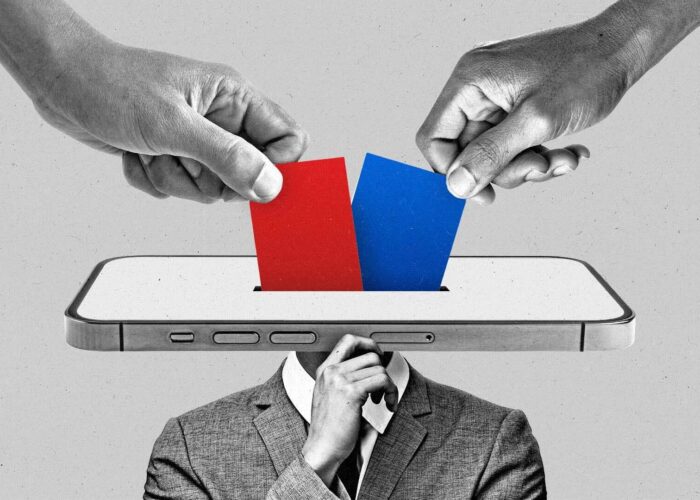In today’s interconnected and fast-paced digital age, a brand’s reputation is its most valuable currency. For corporations, a strong reputation translates to customer loyalty, market trust, and sustained growth. For personal brands, it’s the gateway to influence, opportunities, and professional credibility. Yet, in an era where a single misstep can go viral within minutes, safeguarding and enhancing a reputation is more challenging than ever. This is where digital advertising steps in as a game-changing tool. With its ability to target audiences with precision, deliver tailored messages, and adapt in real time, digital advertising has become indispensable in shaping both corporate and personal brand reputations.
This blog explores how digital advertising can transform reputation management efforts, offering strategies and case studies to demonstrate its power and versatility. Whether you’re looking to build credibility, manage a crisis, or repair a damaged image, digital advertising offers solutions to navigate the complexities of modern reputation management.
The Role of Reputation in Today’s Digital Landscape
A strong reputation translates to trust, loyalty, and long-term success. However, the internet’s transparency can also amplify negative information, making proactive reputation management essential. In this context, digital advertising provides a unique advantage: the ability to control messaging, target specific audiences, and respond swiftly to challenges.
Digital advertising’s value lies in its precision. Unlike traditional media, it enables real-time engagement with carefully defined demographics. This capability makes it indispensable for addressing both opportunities and threats to a brand’s image.
1. Proactive Reputation Building
The foundation of reputation management lies in proactive efforts to establish credibility and trust. Digital advertising offers several ways to achieve this:
Highlighting Achievements
Corporations and individuals can use digital ads to showcase their accomplishments. For instance:
- Corporate Campaigns: Highlight awards, certifications, or partnerships in display ads or video ads.
- Personal Brand Growth: Promote key milestones like book launches, keynote speeches, or professional recognitions on platforms like LinkedIn and Instagram.
Sharing Thought Leadership
Thought leadership enhances credibility and positions a brand as an authority in its field. Sponsored content or paid ads promoting whitepapers, blog posts, or webinars can elevate visibility among target audiences.
Community Engagement
Community involvement is increasingly valued by audiences. Ads featuring Corporate Social Responsibility (CSR) initiatives, such as sustainability efforts or charitable work, can humanize a brand and foster goodwill.
2. Crisis Management
No matter how robust a reputation may be, crises are inevitable. The key lies in responding swiftly and effectively. Digital advertising can play a crucial role in minimizing damage and rebuilding trust.
Rapid Response Campaigns
In the age of instant news, misinformation spreads rapidly. Digital ads provide a channel for brands to counter false narratives with accurate information. For example:
- Use Google Ads to promote official statements at the top of search results.
- Leverage social media ads to address specific allegations and provide clarity.
Direct Communication
During a crisis, transparency is essential. Social media ads allow brands to directly communicate with their audience. Platforms like Facebook and Twitter can be used to share real-time updates, ensuring stakeholders stay informed.
Search Engine Ads
Search engine reputation management (SERM) is critical during crises. Paid search ads targeting branded keywords ensure that positive or corrective content appears prominently in search results, pushing negative stories further down.
3. Sophisticated Targeting for Reputation Management
Sophisticated targeting capabilities offered by digital advertising platforms enable brands and individuals to connect with the right audience, ensuring their messaging resonates where it matters most. This approach can significantly enhance reputation management efforts.
Geo-Targeting for Localized Impact
Geo-targeted ads allow brands to focus on specific regions where their reputation might need improvement or reinforcement. For instance:
- Localized Crisis Response: Address region-specific issues by tailoring ads with localized messaging.
- Community Building: Highlight community initiatives or partnerships in targeted areas to build local goodwill.
Demographic and Interest-Based Targeting
Platforms like Facebook, LinkedIn, and Google allow advertisers to define their audience by age, gender, interests, and profession. This ensures reputation-building content reaches the most relevant audience.
- Corporate Example: A healthcare brand could target ads about safety initiatives to families or professionals in the medical field.
- Personal Brand Example: An entrepreneur might target fellow business owners with ads showcasing thought leadership articles.
Behavioral Targeting
Behavioral targeting analyzes online activity to serve ads to users based on their interests, search history, or browsing behavior. This enables brands to:
- Promote positive news or testimonials to users who recently visited their website.
- Share corrective content with individuals who engaged with negative coverage or competitor content.
Retargeting Campaigns
Retargeting ads are a powerful way to re-engage users who have previously interacted with the brand. By promoting positive updates or success stories, brands can shift perceptions and encourage loyalty.
4. Online Sentiment Management
Managing online sentiment involves monitoring public perceptions and influencing conversations in a positive direction. Digital advertising enables brands to take a proactive stance.
Monitoring and Redirecting Conversations
Programmatic ads can target audiences engaging in conversations about the brand online. By promoting content that highlights positive aspects, brands can shift the narrative.
Engaging Influencers
Influencers play a significant role in shaping opinions. Partnering with influencers to create sponsored content can amplify positive messages. Paid campaigns promoting these posts can ensure they reach a wider audience.
5. Enhancing Customer Experience
A positive customer experience is directly linked to a strong reputation. Digital advertising can support efforts to highlight and enhance this experience.
Promoting Positive Reviews
Satisfied customers often leave glowing reviews, which can be featured in ad campaigns. For example:
- Showcase testimonials in carousel ads on Facebook or Instagram.
- Highlight case studies or success stories in LinkedIn ads targeted at industry professionals.
Resolving Complaints
Dissatisfied customers represent an opportunity to demonstrate excellent service. Ads inviting customers to resolve issues privately—via a dedicated support page or chat—show a commitment to care and responsiveness.
6. Building Personal Brands
Individuals aiming to build their personal brands can also benefit immensely from digital advertising. Whether you’re a thought leader, entrepreneur, or creative professional, ads can amplify your visibility and impact.
Social Media Ads
Platforms like Instagram, Twitter, and TikTok are ideal for showcasing achievements and personal milestones. Sponsored posts can ensure content reaches the right audience, driving engagement and building trust.
LinkedIn Advertising
LinkedIn is a powerful platform for professionals. Paid ads can target specific industries, job titles, or geographic locations, making it easier to connect with the right audience. For example, an entrepreneur can use LinkedIn ads to promote their thought leadership articles or speaking engagements.
YouTube Pre-Roll Ads
Video content adds a personal touch, helping individuals connect with their audience on a deeper level. Pre-roll ads can feature personal insights, behind-the-scenes content, or professional advice, building authenticity and trust.
7. Reputation Repair
When reputations are damaged, digital advertising can play a critical role in repair efforts. It’s about shifting perceptions and rebuilding trust.
Suppressing Negative Content
Search Engine Optimization (SEO) campaigns combined with paid search ads can push negative content further down search results. By promoting positive articles, videos, or testimonials, brands can control the narrative.
Retargeting Ads
Retargeting campaigns are effective in re-engaging past visitors. By sharing positive updates or showcasing new initiatives, brands can shift perceptions and win back trust.
8. Building Trust Through Transparency
Transparency is a cornerstone of reputation management. Digital advertising offers innovative ways to foster openness and build trust.
Interactive Ads
Interactive formats, like polls or Q&A ads, invite dialogue and demonstrate a willingness to engage with the audience. These ads can also collect valuable feedback while strengthening relationships.
Video Ads
Video ads that offer behind-the-scenes glimpses into operations, employee stories, or corporate values can humanize a brand. Transparency fosters authenticity, which is essential for trust.
The Digital Advertising Toolbox for Reputation Management
Several digital advertising tools and platforms are particularly effective for reputation management:
Search Engine Marketing (SEM)
Search engine ads ensure that positive content ranks prominently when people search for your brand.
Social Media Advertising
Social platforms like Facebook, Instagram, LinkedIn, and TikTok allow for precise audience targeting and real-time engagement.
Programmatic Advertising
Automated ad buying enables brands to reach audiences across multiple channels with relevant messaging.
Video Advertising
Platforms like YouTube and TikTok are ideal for creating engaging video content that builds trust and credibility.
Display Advertising
Display ads featuring testimonials, case studies, or thought leadership content can boost visibility and credibility.
Case Studies: Digital Advertising in Action
Corporate Example: Starbucks’ Commitment to Sustainability
Starbucks has effectively used digital advertising to highlight its sustainability efforts and maintain a positive brand image. During controversies surrounding waste and environmental concerns, the company launched targeted ad campaigns to emphasize its initiatives, such as using recyclable materials and supporting ethical sourcing. These ads appeared across Google and social media platforms, ensuring key messages reached customers who were environmentally conscious or expressed concerns online. By promoting its long-term goals and actions, Starbucks reinforced its commitment to making a positive impact, ultimately strengthening its reputation.
Personal Brand Example: Repairing Logan Paul’s Image
Logan Paul, a YouTube personality, faced significant backlash after posting controversial content in 2018. To repair his reputation, he turned to digital advertising and rebranding efforts. Paul launched YouTube ads promoting his new, socially responsible projects, such as raising awareness for suicide prevention and mental health. He also used Instagram ads to showcase his philanthropic efforts, including donations and collaborations with mental health organizations. Through consistent, targeted campaigns, Paul managed to reframe public perception, demonstrating growth and a commitment to making amends, which eventually helped restore his personal brand.
Measuring Success in Reputation Management
Digital advertising provides measurable results, enabling brands to assess the impact of their reputation management efforts. Effective measurement involves evaluating key performance indicators (KPIs) and interpreting data to refine strategies. Here are the primary areas to focus on:
Engagement Metrics
Engagement metrics are the foundation for assessing whether your campaigns resonate with your target audience. These include:
- Click-Through Rates (CTR): Measures how often users click on your ads, indicating the effectiveness of your messaging and creative.
- Likes, Shares, and Comments: Social media engagement reflects how well your content connects with audiences and sparks conversation.
Sentiment Analysis
Sentiment analysis tools can gauge the tone of public discourse about your brand before, during, and after your campaigns. Monitor shifts in positive, neutral, and negative mentions across social media, forums, and review sites.
Search Rankings
Improved visibility of positive content in search engine results is a critical outcome of reputation management. Track the ranking positions of key branded keywords and assess whether your campaigns are displacing negative content.
Website Traffic and Conversions
Evaluate the impact of your campaigns on website visits and desired actions, such as newsletter sign-ups or purchases. Tools like Google Analytics can provide insights into traffic sources and conversion paths.
Return on Ad Spend (ROAS)
Calculate ROAS to measure the profitability of your advertising investments. For reputation management campaigns, this could include intangible benefits like improved sentiment and trust.
Audience Reach and Frequency
Ensure your campaigns are reaching the right audience without over-saturating them. Tools on platforms like Facebook Ads Manager or Google Ads provide detailed reach and frequency metrics.
Survey and Feedback Mechanisms
Conduct post-campaign surveys to gather qualitative data directly from your audience. Ask specific questions about how their perception of your brand has changed.
By consistently monitoring these metrics and adapting your strategies accordingly, you can ensure your digital advertising efforts align with your reputation management goals.
Reputation management in the digital age is both an art and a science. While the risks of negative publicity have grown, so too have the tools available to counter them. Digital advertising stands out as a versatile and impactful solution, empowering brands and individuals to shape narratives, build trust, and navigate crises effectively. Whether it’s a corporation solidifying its market position or a personal brand repairing its image, the strategic use of digital advertising can turn challenges into opportunities. By investing in targeted, transparent, and engaging campaigns, brands can not only protect but enhance their reputations, ensuring long-term success in an ever-competitive landscape.



